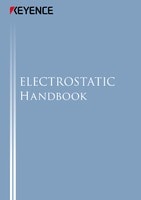Nature and Level of Static Electricity
As explained earlier, static electricity can be either electrically positive or negative.
This section explains the nature of positive and negative charges.
- Coulomb force (generated by static electricity)
- Triboelectric series
- Estimated electric charge amount
Coulomb force (generated by static electricity)
Electric force works between positive and negative electrostatic charges. Since this force is very similar to magnetic force, let’s use a magnet as an aid to the explanation.
Magnets have north magnetic poles and south magnetic poles. When north and south poles come close to each other, the magnets are attracted toward each other. When two of the same poles come close together, they repel each other. In short, an attractive force works between north and south poles while a repelling force works between two north poles or two south poles. This is called a magnetic force.

The same occurs with static electricity. A positively charged object and a negatively charged object are attracted to each other while two objects that are both positively or negatively charged repel each other.
This means that a certain force is working on charged objects: a positively charged object and a negatively charged object attract each other while a repelling force works on two objects that are both positively or negatively charged. This force is called Coulomb force.

Triboelectric series
As previously discussed, static electricity can be positive or negative, but what objects take on a positive charge and what objects a negative one?
The triboelectric series expresses this property in an easy-to-understand manner.
The triboelectric series shows which materials are likely to take on positive or negative charge. For example, nylon is prone to be positively charged while polyester negatively charged. If polyester and nylon come into contact, nylon will be positively charged and polyester negatively charged.
The greater the distance between two materials on the triboelectric series, the greater the static electricity that will be generated.
The triboelectric series shows the polarity of the charge a material will easily take on as well as the magnitude of the static electricity that will be generated. The triboelectric series may provide solutions to problems caused by static electricity.
- Triboelectric series

Estimated electric charge amount
Human bodies also take on electrostatic charge. The zap that you feel when you get in a car is caused by electrostatic discharge from your body. The amount of static electricity that comes with the slight pain that you feel in everyday life is said to be about 3 kV. People can barely feel static electricity that is weaker than 1 kV.
However, at manufacturing sites and other places where electrostatic buildup is strictly controlled for quality and sanitary purposes, even minor static electricity discharges that are barely felt can cause problems. A variety of problems can be caused by static electricity and discharge, ranging from dust adhesion and equipment failure to fire and explosion. This means that even with static electricity that is so minor that people can’t feel it, measurement and control are required in some situations.
| Electric potential of electric shock on human body [kV] | Magnitude of shock |
|---|---|
| 1.0 | Feel nothing. |
| 2.0 | Feel something around the fingers, but no pain. |
| 3.0 | Feel a shock like the prick of a needle. |
| 5.0 | Feel pain in the palm and along the forearm. |
| 6.0 | Feel strong pain in the fingers and the upper arm feels heavy. |
| 7.0 | Feel strong pain and numbness in the fingers and palm. |
| 8.0 | Feel numbness in the palm and along the forearm. |
| 9.0 | Feel strong pain in the wrist and numbness in the hand. |
| 10.0 | Feel pain and the flow of electricity in the entire hand. |
| 11.0 | Feel strong numbness in the fingers and strong shock in the entire hand. |
| 12.0 | Feel a strong blow throughout the entire hand. |
“Guiding principles for electrostatic safety” from the National Institute of Occupational Safety and Health, Japan.
- Terminology explanation
- Magnitude of shock: Shock felt when a human body receives current through discharge
- Electric potential of electric shock: Difference in potential between the human body and charged object; amount of static charge buildup in a human body






